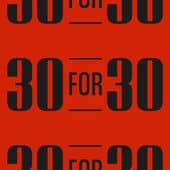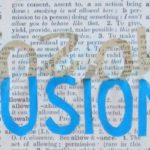Jody Avirgan can’t just stick to sports hosting both ESPN’s 30 for 30 Podcast and FiveThirtyEight Politics


What if I told you it’s possible to host two wildly-different successful podcasts? Meet Jody Avirgan, host of ESPN’s 30 for 30 Podcast and FiveThirtyEight’s Politics Podcast. Jody has your traditional route to become a big-time podcaster, if there actually was a traditional podcaster career arc. Starting with a public radio background at WNYC, Jody eventually landed at the ESPN-owned FiveThirtyEight where she hosted and produced podcasts before doing double duty with ESPN’s sports documentary series (and now podcast), 30 for 30.
If you’re unfamiliar, ESPN launched the 30 for 30 documentary series in 2009 intended to feature 30 stories in sports from the past 30 years. The series was (and is) widely successful — earning a Peabody Award in 2010, an Emmy in 2014, and culminated by winning the Oscar for Best Documentary Feature in 2016.
In March 2017 ESPN announced they were launching a podcast under the same umbrella brand, the 30 for 30 Podcast was born. Highly-anticipated, this wasn’t a traditional podcast launch. Since ESPN chose to brand the podcast “30 for 30”, it immediately had higher, more grandiose expectations than any other podcast they’ve launched. In short, it had a lot to live up to.
Two seasons later, it’s clear the podcast delivered on the hype providing yet another unique medium to the larger 30 for 30 brand. The stories they choose to report on are everything you’d want (and expect): riveting characters blended with little-known, yet fascinating stories. Even the most diehard sports fans will learn something new, like not knowing a particular side of the story or an unheard of perspective. Yet, non-sports fans will find them just as interesting, if not more. Where sports fans will sometimes enter the story with some preconceived ideas or opinions, non-sports fans will be treated to a highly-produced and painstakingly-researched documentary series (or podcast).
I was fortunate enough to discuss the podcast with host Jody Avirgan. What was immediately interesting for me, a fan of both series, was the origin of the podcast and the early trial and errors. Instead of the polished original stories that made it into your podcast feed, they first thought you could simply create audio formats of the existing video documentary series only to realize the stories, interviews, and research wouldn’t quite translate to an audio-only format as they intended. Back to the drawing board.
I won’t spoil the rest of the conversation, but I will say it’s always fascinating to learn one’s origin story and how that led them to where they are today. Though we typically assume it’s some masterfully orchestrated decision, more often it’s by happen chance, or in Jody’s case, bouncing ideas off colleagues. Below is our Q&A, lightly edited for clarity.
Listen: iTunes
***
Kevin: To start things off, can you tell us a little bit about how you ended up in podcasts, and, ultimately ended up with ESPN hosting 30 for 30 and FiveThirtyEight Politics podcasts?
Jody: I started in public radio working at WNYC, the NPR station in New York. I had a home base called the Brian Lehrer Show, the daily public affairs talk show. I was able to report for other shows, help launch a new project, or work on a special project, so I bounced around and got a lot of different experience. Eventually after seven years, for all the reasons people get antsy and itchy, I decided to leave WNYC and was freelancing for awhile.
This was late 2015 and I knew I wanted to be somewhere permanent in time for the 2016 election. I didn’t know the 2016 election was going to be what it was, but I love covering elections. Not long after I left WNYC, I ended up talking to some folks at FiveThirtyEight as they were starting to think about podcasting, and wanted to bring someone in to get that going. So my freelance career lasted a month and a half before I then linked back up with a gig at FiveThirtyEight.
I started the FiveThirtyEight Politics podcast and a couple other shows, while also doing more hosting which was a goal of mine. FiveThirtyEight and 30 for 30 share an office space inside the little ESPN universe. Since we physically sit on the same floor I started to get to know some of the 30 for 30 team.
Over the course of early 2016 we had some conversations about what a 30 for 30 podcasts look like. I started talking with them and we tried a few things on the side. Eventually, we agreed it’s something we wanted to do for real. We worked out a way for me to keep hosting some FiveThirtyEight stuff but transition over and do the 30 for 30 podcasts.
Throughout the whole process, I didn’t even switch desks.
Kevin: How do you view or classify the 30 for 30 documentary series, as companions or completely different entities?
Jody: Our initial thought was to repurpose some of the films as podcasts. We tried and realized audio is its own medium, different stories work in different ways. In order to tell a good audio story you need to report it out and select the stories that lend themselves to audio. So we decided, “hey, if we’re going to do 30 for 30 podcasts and we want them to live up to everything we love about 30 for 30, we’ve got to do these for real.” These need to be original stories developed, chosen, and reported out for audio specifically. I want to move to a place where we do some stuff across both sides, but our audio documentaries are conceived of as audio first and reported that way.
The cool thing is now, when an idea or story comes to us, we have the ability to say, “hey, is this best done as a short film? A full length film? A multi-part thing? A podcast? A multi-part podcast?” We now have a range of options for any given story and we can hopefully find the best fit.
Kevin: With the podcasts, you’re obviously losing the visual aid and you touched on this in a previous answer, but how do you compensate with that?
Jody: I would quibble with your word “compensate” because there are certain strengths audio has that video does not. Story selection is the most important part of the whole process. When you have a great story with vivid characters, then your job is to basically get out of the way. If you’ve chosen a bad story, or a story doesn’t work for whatever reason, you end up fighting the story and it becomes hard. So we spend a lot of time developing ideas, evaluating ideas, and only selecting ones we feel like, “Hey, this is a great, rich story that meets all of our standards.”
In terms of what’s different about the mediums, yes, you don’t have the visuals but audio — it sounds cliché — is very intimate. You can get people to talk and open up in a way you can’t on video. We ask for a lot of time. We ask the kinds of questions people aren’t used to getting asked, particularly if they’re in the sports world. So hopefully you’re getting people to open up a little bit more, talk about their experience, reflect.
There’s a lot of stories where there isn’t a visual component. We did a story last season about a casino heist. A lot of story takes place in the back room at Crockfords Casino in London where there aren’t cameras. We can take our listener there by having people describe it, by telling you what it looks like, by talking about what goes down there, by building an audio element. Think about how that would have to look as a film. You’d have to have all of these cutaways of chips in slow motion hitting a poker table. All these awful, cheesy film cliches.
There are also stories 30 for 30 hasn’t been able to do because the footage doesn’t exist. Well, now all of a sudden it’s a possibility to tell it as an audio story.
Kevin: Are there certain stories you wanted as a podcast but didn’t work or became documentaries?
Jody: There are certainly high-profile stories that could be either one, like the Dan and Dave one we did last season. You get a little selfish and say, “this is a good story. I want to tell it.” But we’re all pretty much rowing in the same direction so it feels like we’re trying to evaluate what’s the best way for this story to get told.
We’ve certainly killed a number of stories. Some stories where you start to go down the line, you even do a bunch of interviews, only to realize people aren’t opening up in the way we need them to. People aren’t taking us there. When you’re listening to audio you don’t have the other visual element to help tell the story, so you need someone to be able to take you there in their voice. That was certainly part of the experience with trying to repurpose the audio for the films. We ripped the audio, re-cut it, but the kind of clips we were getting for a visual film are different from the kind of clips that make an audio piece elevate.
Kevin: Was the 30 for 30 podcast something you fought for or did you plant the seeds with the 30 for 30 team and they ran with it and brought you on?
Jody: To put it bluntly, 30 for 30 were probably the last people to have the idea there should be a 30 for 30 podcast. The initial idea, which I was game for, was turn to the existing films into podcasts and they asked if I could help them.
Pretty early on we started thinking about how to make these original. To do narrative audio documentaries inspired by 30 for 30. It all lined up and we agreed to do it right and resource it correctly. Hire the proper staff, do original stories, give it time, space, resources, and a budget.
Kevin: How do you balance your time between 30 for 30 and FiveThirtyEight?
Jody: It’s definitely been a challenge to balance. Certainly, taking on 30 for 30 meant stepping back from FiveThirtyEight. One of the shows I was hosting no longer exists, but it was also an opportunity to have someone else step in the FiveThirtyEight setting. This gave them the chance to build something new and have more resources on their side. The FiveThirtyEight folks have been accommodating in letting me balance.
It was tough in the heat of the election when we were covering the last month of the election and launching this new thing. I found more of a balance mostly due to the fact we hired a great team. It’s only been a year of this thing, but we have some systems in place and know our roles. Anyone who’s built a team will tell you, the most important thing is to hire people who you trust, want to work with, and have their own set of talents. Then, simply set them up to do their thing and get out of the way. This last year has been a big process of doing that.
To answer your question in a more nuts and bolts manner: I come in on Mondays and prep for the politics pod. We record later on Monday afternoons. Then, much of the rest of the week is devoted to 30 for 30. The physical closeness to the FiveThirtyEight team allows me to jump into meetings and stuff throughout the week.
I will say the 30 for 30 thing is incredibly satisfying, we’re telling stories that go beyond sports. But I do have a political journalism streak in me. This is an incredibly interesting and important political time and I’m lucky I’ve been able to find a way to do both of these things.
Kevin: That must anger the stick to sports crowd because for you it’s actually impossible.
Jody: I know, my job description is literally talk about politics and also talk about sports. I’m not a target for the stick to sports stuff.
Kevin: With a background in radio, where do you see the relationship between the two medium headed? Do you think there’ll ultimately be a winner or do you think there’s a mutual balance?
Jody: It’s a good question. I use the word “radio” to talk about every audio product. I think public radio, tends to be in a position of strength. When you talk about ambitious narrative, highly-produced, highly-resourced radio, they’re the ones that have been doing it the longest. A lot of the DNA in the podcast world comes from public radio DNA. We’re doing a bit of this by taking an ESPN sensibility and marrying it with a public radio sensibility.
A lot of the conventional wisdom within public radio is not in the podcasting space. It means stuff is going to sound more different and ambitious and weird, in an experimental way.
For decades, if you were an ambitious, thoughtful, narrative, audio journalist the only game in town was your local public radio station or NPR. Pretty quickly in the last five years, there’s now more competition. You can be independent and viable. You can go to another podcasting company or another legacy media institution like ESPN or whoever is getting into podcasting.
It’s healthy, but it’s been a rocky road for a lot of public radio because they’re not used to added competition.
To me, a divide is when advertising and metrics start to evolve further. We’re going to see winners and losers in terms of shows that have an attractive audience to advertisers. 2018 is going to be a year of reckoning on that front. When we start to get more data and analytics about our audiences there’s going to be a lot of changes.
Kevin: Besides advertising and analytics, are there other larger podcasting trends you’re following closely?
Jody: For me that’s the big one. It’s helpful to compare the podcast industry as the film industry, the TV industry, or the web video industry, but a few generations behind. We are walking the same path TV walked generations ago and YouTube creators walked over the last 10 years or so. This initial movement is the Wild West. People can be independent, and still make a bunch of money because it’s new and you can find niche audiences. There’s explosion and buzz. Then, all of a sudden, the money and the metrics show up and the big players get involved and there’s a contraction. It’s natural and it’s going to happen, but I also think there’s going to be some real downsides from that.
A lot of shows aren’t going to be viable anymore. The conventional wisdom is going to change about what makes for a viable podcast.
At the same time, the other trend we’re going to see is more and more experimentation. Right now, to put it bluntly, podcasts sound very much like public radio or talk — a few people in a room talking about comedy, sports, or politics. True crime feels like the type of show that found a groove and is taking off.
We’re starting to see children’s podcasting taking off. We haven’t seen a ton of ambitious, non-fiction podcasting or fiction podcasting. We haven’t seen a ton of romantic comedy podcasting or historical fiction. We’re the only ones doing narrative sports podcasting, I think there should be many more.
Kevin: I’m glad you brought up true crime. From my perspective, it seems so many podcast listeners entrance into the medium was through Serial or S-Town and they’ve stuck with that genre. But it is refreshing on the other hand, to see the experimentation like you mentioned start to take off.
Jody: Yeah, and we’re going to see more and of it. I don’t know why true crime became this thing. Maybe because people like crime and it’s inherently interesting, but it is slightly baffling to me that, that’s been the big new bucket.
Kevin: I think everybody’s trying to capture the Serial or S-Town success right now. So you’re balancing your time between two podcasts, have a baby at home, when you do get the chance what podcasts out there do you listen to?
Jody: I still think This American Life is basically the best show. I love On the Media, I also listen to a lot of comedy talk type shows. I actually have recently loved The Rewatchables at The Ringer. It’s the show The Ringer and Bill Simmons was born to do. At some level, no matter what the topic is, all their shows have tended to veer towards super obsessive, pop culture references. The brilliance of this show is they made a format of it. I recently re-listened to Serial season two. I listen to Fresh Air, basically every day. I also think The Daily is the first show I’ve heard in a long time that feels like, there’s something special and new happening. I’m incredibly impressed with that show on its own and even more impressed they do it every day.
I like Mogul and The Nod a lot, as well.
I write a little podcast recommendation in a newsletter every weekend, so, it forces me to poke around and listen a little bit each week. That’s a big goal of mine this year, to listen and watch more widely. I don’t watch as many documentaries as I should. I don’t listen to as much of what’s been done out there as I should.
Kevin: That’s a good New Year’s resolution. What’s something a casual user probably doesn’t know about you or your podcasts or the process that goes on behind the scenes?
Jody: A big part of the 30 for 30 project is to show and continue to make the case ambitious, narrative, deeply reported podcasting takes real resources. It takes time. It takes intellectual resources. It takes people. It takes money.
The word “podcasting” can mean so many different things. It can mean everything from The Rewatchables to This American Life. There’s a notion all podcasts are cheap or easy or a quick turnaround. A big part of my job is to show people in many ways it’s important to think of our stuff as closer to a short film than their misperception of a “podcast”.
Our stories take months and months and months. They take hundreds of hours of interviews. They take travel. They take archival. They take licensing. They take original music and composition. This world is still so young that people don’t have their head around this in the same way they do with film.
Kevin: There’s a lot of people working on the podcast behind the scenes.
Jody: Absolutely. To that end, I feel so grateful we are well-resourced. The best part of this whole thing was being given the opportunity to hire some incredibly talented folks and bring them on board. In the grand scheme of things, we are very, very lucky to have the resources we have. We want to take advantage of this and continue to build the case to do it right, it’s got to be this way.













Comments
Comments are closed.